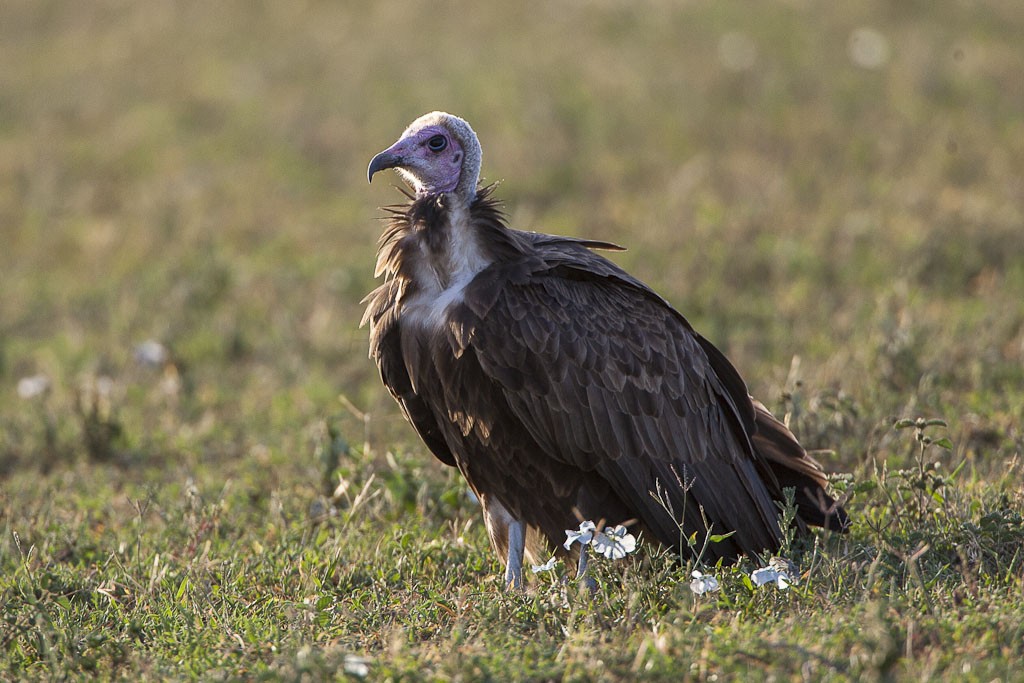Hooded Vulture
A species of Hooded Vulture Scientific name : Necrosyrtes monachus Genus : Hooded Vulture
Hooded Vulture, A species of Hooded Vulture
Botanical name: Necrosyrtes monachus
Genus: Hooded Vulture
Content
Description People often ask General Info
 Photo By Francesco Veronesi , used under CC-BY-SA-2.0 /Cropped and compressed from original
Photo By Francesco Veronesi , used under CC-BY-SA-2.0 /Cropped and compressed from original Description
The hooded vulture (Necrosyrtes monachus) is an Old World vulture in the order Accipitriformes, which also includes eagles, kites, buzzards and hawks. It is the only member of the genus Necrosyrtes, which is sister to the larger Gyps genus, both of which are a part of the Aegypiinae subfamily of Old World vultures. It is native to sub-Saharan Africa, where it has a widespread distribution with populations in southern, East and West Africa. It is a scruffy-looking, small vulture with dark brown plumage, a long thin bill, bare crown, face and fore-neck, and a downy nape and hind-neck. Its face is usually a light red colour. It typically scavenges on carcasses of wildlife and domestic animals. Although it remains a common species with a stable population in the lower region of Casamance, some areas of The Gambia, and Guinea-Bissau, other regions such as Dakar, Senegal, show more than 85% losses in population over the last 50 years. Threats include poisoning, hunting, loss of habitat and collisions with electricity infrastructure, and the International Union for Conservation of Nature has rated its conservation status as "critically endangered" in their latest assessment (2017). The highest current regional density of hooded vultures is in the western region of The Gambia. 
Size
70 cm
Colors
Brown
Black
Red
White
Pink
Life Expectancy
20-30 years
Nest Placement
Ground
Feeding Habits
Hooded Vulture primarily scavenge on carcasses and human refuse, supplementing their diet with insects during emergences. They exhibit varied foraging behaviors, from flocking at carcasses in West Africa to solitary scavenging in southern Africa, occasionally following other predators for food.
Habitat
Hooded Vulture's primary habitats include open woodlands and savannas, as well as forest edges. They are versatile, also found in grasslands, deserts, wooded savannas, coastal areas, and human-altered landscapes. Typically residing below 1,800 meters altitude, hooded Vulture nests in trees with foliage near water, favoring regions with fewer competing Gyps vultures.
Dite type
Scavenger
People often ask
General Info
Feeding Habits
Bird food type
Behavior
It breeds in a stick nest in trees (often palms) in much of Africa south of the Sahara, laying one egg. Birds may form loose colonies. The population is mostly resident and sedentary, rarely moving more than 200 km. 
Distribution Area
Although hooded vultures have relatively small home ranges, they are widely distributed across Africa. It occurs in Senegal, Mauritania, Guinea-Bissau, The Gambia, Niger and Nigeria in West Africa; in East Africa it is found in Chad, Sudan, South Sudan, Ethiopia and Somalia; in southern Africa it has been recorded in northern Namibia, Botswana, Zimbabwe, Mozambique and South Africa. Within South Africa, the species is essentially restricted to the Kruger National Park and surrounding protected areas in Mpumalanga and Limpopo provinces, though vagrants have been recorded further west in Kwa-Zulu Natal and Kgalagadi Transfrontier Park. 
Species Status
Raptors are protected in many West African and Northeastern countries and in South Africa under the United Nations Convention on the Conservation of Migratory Species of Wild Animals (CMS), in the Memorandum of Understanding on the Conservation of Migratory Birds of Prey in Africa and Eurasia (the ‘Raptors MoU’). This plan includes the Hooded vulture. Systematic monitoring and protection schemes for African raptors, including the hooded vulture, exist and some populations occur within protected areas. It has been suggested that the best way to slow the decline of vulture populations in Africa, and avoid a massive decline on the scale of the Asian vulture crisis of the 1990s in which populations declined 95% because of the veterinary drug Diclofenac used in livestock whose carcasses were fed on by vultures, pesticides and poisons need to be regulated and limited by governments in countries where the hooded vulture occurs . 